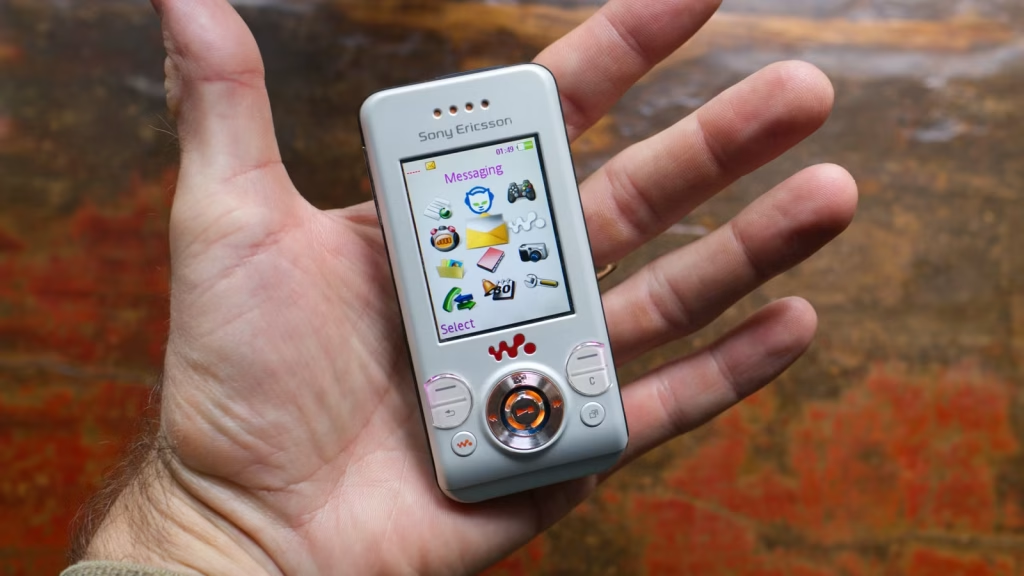In an age where your smartphone can do almost anything, it might come as a surprise to learn that the “dumbphone” movement is gaining momentum. Instead of the latest iPhone or Android smartphones, some people are embracing the simplicity of handsets that do less.
While simplicity has its merits, be prepared for significantly fuller pockets.
Some people are ditching modern smartphones
The term “dumbphone” might sound like a put-down, but it’s the most obvious antonym that springs to mind to describe anything that isn’t a smartphone (along with “brick phone” and the slightly more acceptable-sounding “feature phone”).
The anti-smartphone movement has gained momentum among those who are increasingly dubious of the effects that social media is having on their mental health, productivity, and society at large. In 2024, terms like “brain rot” and “doomscrolling” became normalized, with such content and practices commonly associated with smartphones.
While there are some good ways that you can combat doomscrolling without throwing away your fancy phone (like getting ChatGPT to abuse you or gamifying your productivity with free apps), it’s a lot harder to cave in when your only device is limited to bare minimum core functions like phone calls and SMS text messages.
When rejecting the unfiltered smartphone experience, there are three directions you can pursue. The first is to find an old “dumbphone” that still works (and is compatible with modern cellular networks). This can be easier said than done, especially if the 2G and 3G networks have been switched off in your region. Old Blackberry devices seem to be a popular choice, since these were high-end business-class devices in their prime.
Alternatively, you can buy a modern “dumber phone,” like the Light Phone or the Minimal Phone, the latter of which even has an eInk display. Though cheaper versions exist, the niche appeal of these products often means they’re more expensive than moderately-priced smartphones or used models.
Another option is to choose a regular smartphone, which is cheaper and more readily available than niche alternatives, then lock it down. You can do this by imposing restrictions with built-in features like Screen Time or Focus modes. iPhone users can go even further by using Apple Configurator to limit which apps are available and disable all new app installs on their devices.
EDC stands for “everyday carry”
I use my iPhone for a vast range of tasks when out and about. I don’t carry a wallet, since I pay with my iPhone. I verify my age and identity with my state’s driving license app. I use my iPhone to touch on public transport like trains and ferries. It’s how I listen to music in the gym or when I’m in the car. It’s a navigational aid, a shopping list, and an organizer. It’s my primary camera, and sometimes a games console.
Giving up the brainrot seems like a great idea until you consider all of the other things your smartphone does that you now have to replace. That’s where your everyday carry, or EDC, comes in. Though the phrase isn’t unique to the dumbphone movement, your EDC gets a lot bulkier when you give up a single device that does everything.
Credit: Tim Brookes / How-To Geek
If you want to listen to music on the go, you might dig out an old MP3 player (or a MiniDisc player, if you’re really cool), plus some wired headphones to go with it. With no digital wallet on older devices, you’ll need a real wallet or purse. If you’re trying to replace the time you spend on your smartphone doomscrolling with something a little more enriching, you’ll need a book, an eReader, or a portable console.
If you want to take photos that don’t suck, get into the habit of taking a small point-and-shoot camera with you. Then there’s all the other stuff you need to take out of the house with you: keys, watch, lip balm, sunglasses, and so on. It’s enough to make you appreciate how much smartphones have simplified our lives, even with all the dopamine-sapping side effects.
Fashionable trend or revolution?
Spurred on by subreddits like r/dumphones and r/digitalminimalism, the trend of rejecting the endless scroll in favor of a “simpler” life and overloaded cargo shorts seems alive and well. Despite this, it’s a movement that really requires some commitment if you’re willing to go all-in.
Old dumbphones don’t have access to Wi-Fi, instant messaging apps like WhatsApp, or streaming services like Spotify. Even checking your email can feel like a chore. Software is slow and cumbersome, and though battery life can often span days and not hours, you’ll need to deal with proprietary chargers and worn-out cells.
This is probably why so many “dumbphones” are just smartphones with limits placed on them or KaiOS devices. These are handsets that run a mobile-friendly fork of Linux for feature phones with keypads, which started life as the now-discontinued Firefox OS in 2017. Devices are cheap and simple, but app support is spotty. KaiOS devices fall into a gray area, neither dumb nor smart.
Credit: Jordan Gloor / How-To Geek
For some, it’s a way to return to simpler times and retrain their attention spans. For others, it’s an opportunity to experience technology that was already defunct by the time they came of age. There’s no denying that old technologies like audio cassette have a cool factor, so that’s probably a contributing factor too.
I have respect for anyone who takes the nuclear option in a bid to stop doomscrolling, but I’m personally more interested in using modern tools to combat modern problems like replacing doomscrolling with micro learning instead.


